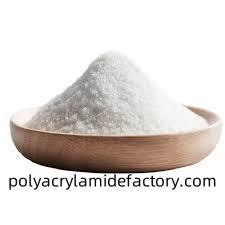How Does Polyacrylamidefactory Oilfield Polyacrylamide Perform

oilfield polyacrylamide is widely used in enhanced oil recovery operations due to its ability to improve water flooding efficiency and increase sweep performance. However, while it offers significant production benefits, its application also brings challenges related to injectivity and formation damage. Understanding these risks is essential for maintaining long term reservoir health and maximizing output.
One of the primary concerns in polymer flooding is injectivity reduction. When oilfield polyacrylamide is injected into the reservoir, its high molecular structure may interact with the porous formation, leading to a decrease in permeability. This reduction can restrict fluid movement and increase injection pressures, which may lower overall efficiency and impact system stability.
Another potential issue is mechanical entrapment. In heterogeneous formations with varying pore sizes, polyacrylamide molecules may become trapped or accumulate in narrow pathways. This blockage can reduce flow capacity and contribute to uneven sweep, leaving areas of the reservoir unswept and underutilized.
Formation damage may also occur due to chemical interactions. When polyacrylamide is introduced into the formation, it may react with minerals or existing fluids, leading to the formation of precipitates or scaling. These byproducts can plug pores and increase the risk of long term damage to the reservoir structure.
Biological degradation is another risk factor. In certain conditions, bacteria present in the formation can break down polyacrylamide molecules, leading to the release of byproducts that may further reduce injectivity or cause additional formation fouling.
To reduce these risks, careful planning and reservoir analysis are essential before applying oilfield polyacrylamide. Pre-injection testing, selection of the appropriate polymer type, and monitoring of system behavior during application help minimize negative impacts. Regular maintenance and real time analysis also support consistent injection performance.
Despite these challenges, the use of polyacrylamide remains one of the most effective methods in improving oilfield recovery rates. When managed properly, the benefits far outweigh the risks, especially when paired with technical support and high quality polymer products.
If your operation is looking for reliable oilfield polyacrylamide that offers consistent performance with reduced formation risk, Polyacrylamidefactory provides trusted solutions designed for complex reservoir conditions. Our formulations support stable injectivity, improved sweep efficiency, and minimized damage to the formation.
To learn more about our oilfield polyacrylamide products, please visit https://www.polyacrylamidefactory.com/product/oilfield/polyacrylamide-for-oil-displacement.html
- Art
- Causes
- Crafts
- Dance
- Drinks
- Film
- Fitness
- Food
- Games
- Gardening
- Health
- Home
- Literature
- Music
- Networking
- Other
- Party
- Religion
- Shopping
- Sports
- Theater
- Wellness


